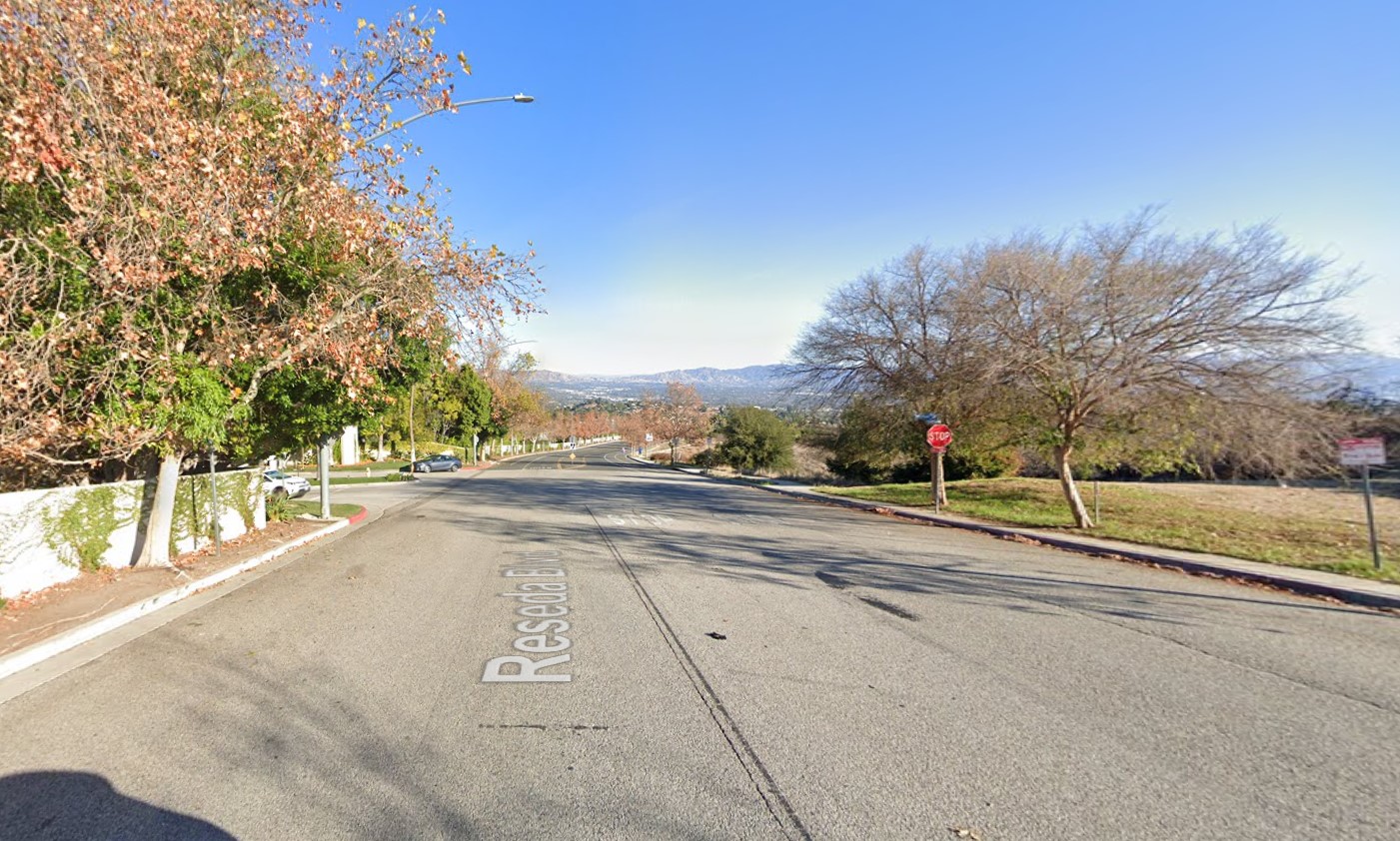
Today marks six months after the March primary election when L.A. City voters approved Measure HLA, designed to implement bus, bike, and walk improvements citywide. Since HLA became law in April, city departments effectively put HLA upgrades on hold. That is, until this week, when the city confirmed a short new stretch of HLA-mandated bike lanes on Reseda Boulevard in Tarzana.
Though the future Reseda bikeway is good news, it looks like an exception that proves the rule. The city has continued to omit mobility improvements on several streets where HLA requires them, including several parts of Vermont Avenue in South Los Angeles.
Measure HLA Background
Measure HLA requires that the city gradually implement its approved plans [see Mobility Plan 2035 map] whenever the city repaves any 1/8-mile or longer street segment where improvements are planned.
Prior to the HLA vote, city leaders claimed that if HLA passed the city would start paying billions of dollars for sidewalk and bike lane projects ($3.1 billion over ten years, mostly for sidewalks). Instead, the city postponed drafting HLA implementation instructions, and the Bureau of Street Services (StreetsLA) effectively stopped repaving streets that trigger upgrades.
Since HLA passed, the city is doing fewer bus/bike/ped upgrades, not more.
Maybe that's starting to change.
Reseda Poised to Get First HLA Upgrade
Last Friday, StreetsLA announced that this week, the city will resurface about a mile of Reseda Boulevard, up in the hills near the street's southern terminus at Marvin Braude Mullholland Gateway Park.

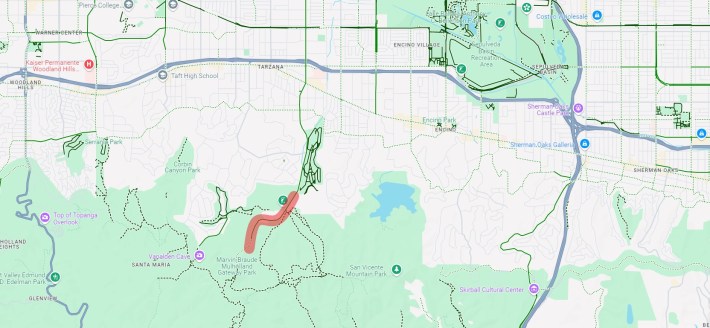
Most of this Reseda Boulevard repaving is expected to re-install existing unprotected bike lanes. HLA now requires that this resurfacing also add about 450 feet of new bike lanes, between Winford Drive and the park gate.
SBLA inquired to StreetsLA and the Transportation Department (LADOT) if they could confirm plans for this part of Reseda Boulevard. LADOT spokesperson Colin Sweeney confirmed the new bike lanes, "Following the resurfacing project on Reseda, LADOT will extend the existing bike facilities on Reseda Blvd up to the edge of the resurfacing project area."
The departments declined to respond with a timeline, but if Reseda roughly corresponds to other city street work, it will be resurfaced this week, and the new bike lanes will be installed within about a month.
Vermont Avenue HLA Upgrades Omitted
In the past few months, the StreetsLA repaved five stretches of Vermont Avenue where the Mobility Plan designates bus, bike and walk upgrades.
- four stretches of Vermont between Gage and Florence Avenues - designated for bus lanes, protected bike lanes, and pedestrian enhancements
- one stretch of Vermont between 146th and 149th Streets - designated for protected bike lanes.
The wrinkle here is that even though these resurfacing projects exceed the 1/8-mile HLA threshold, the resurfacing did not include the entire street, but only the service roads (also called frontage roads).

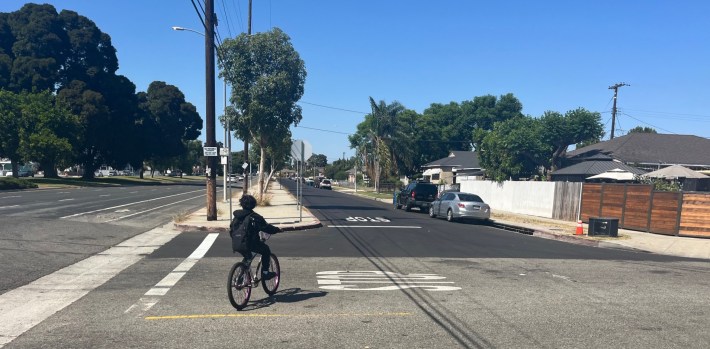
Per LADOT's Sweeney, the city opted not to implement any upgrades because "The service roads repaved next to Vermont are not designated on any Mobility Plan networks and therefore are not subject to HLA requirements."
Note that these roads are not "next to Vermont," they are part of Vermont. The addresses on the repaved segments are Vermont Avenue addresses.
The city's choice is a disappointing one. And a harmful precedent that could land the city in court.
While there might be a flimsy pretense not to install planned bus lanes (Vermont buses don't travel on these service roads), the city omitting pedestrian and bike upgrades is difficult to defend.
Where service roads exist, Angelenos walk and bike on them. HLA now mandates that the city improve walk and bike safety when they are resurfaced.
Vermont's sidewalks - approved as Pedestrian Enhanced Districts in the Mobility Plan - run along the service roads, as do the islands that often double as bus stops. For example, the recently repaved stretch of Vermont between Gage and Florence includes two Metro/LADOT bus stops that are not wheelchair accessible.
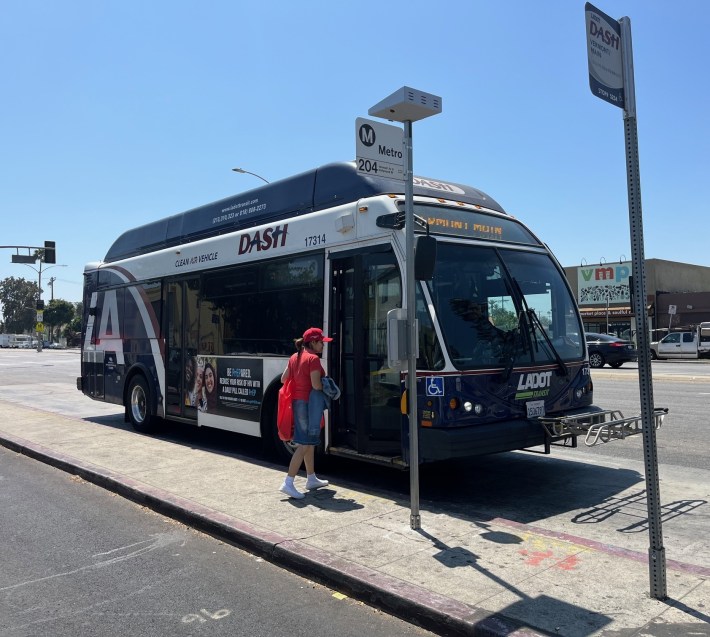

The city has claimed for some time now that it adds ADA-required sidewalk ramps and repairs during resurfacing. But time and again, this has proven untrue for both ramps and repairs. What will it take for L.A. to make Vermont ADA accessible? Another lawsuit?
In addition to ADA requirements, HLA requires walkability enhancements in planned pedestrian districts. At a minimum, the city needs to add/upgrade crosswalks (perhaps start with adding one to the above bus stop), and add basic city Vision Zero pedestrian safety treatments, like painted curb extensions, pedestrian head start signals, and the like.
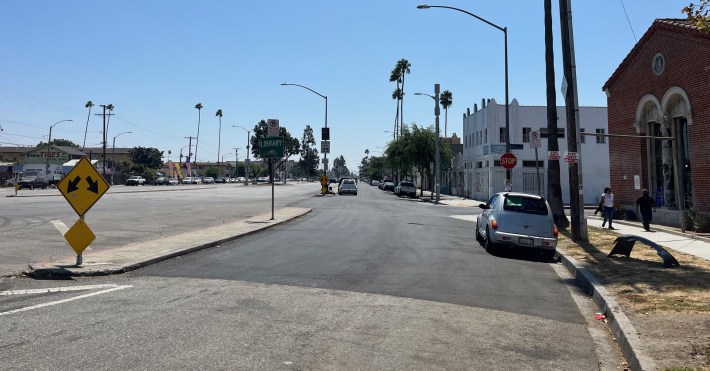
To truly prioritize walking in a designated pedestrian district, this resurfacing should trigger pedestrian plaza/s, bus shelters, tree-planting, sidewalk widening, new midblock signalized crosswalk/s, traffic calming, modal filters - but those would require the sort of budget that city leaders only pledged prior to HLA's passage.
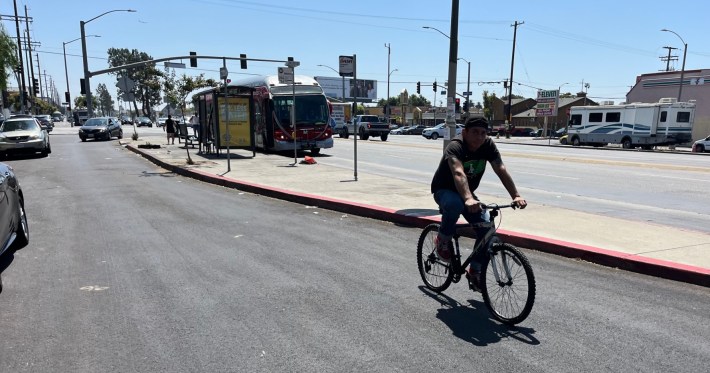
The city resurfaced parts of Vermont that already have an unprotected bike lane painted in the central roadway, but most cyclists ride in the quieter service road (which is in essentially curb-protected).
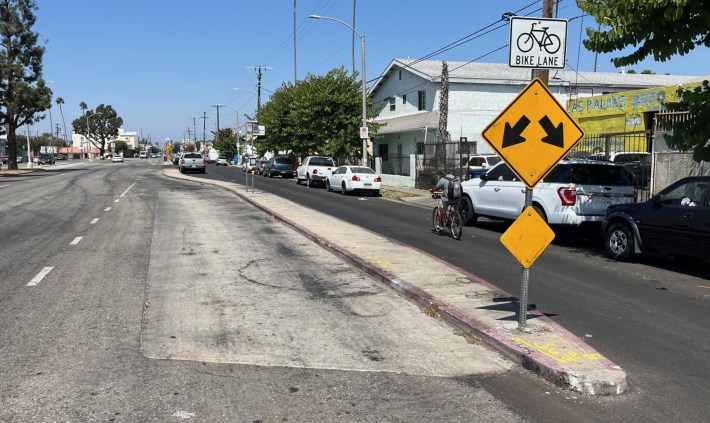
L.A. hasn't yet utilized service roads for bikeways, but it should. Other cities, including Hermosa Beach and San Francisco, locate bikeways there. Walkability improvements noted above would improve Vermont cyclist safety, or the city could locate approved protected bike lanes in service roads, where appropriate.
But the city is just leaving Vermont as it was.
When resurfacing on Vermont Avenue triggers HLA upgrades, the city needs to consider the entire street as an interconnected whole, including sidewalks, islands, roadway, medians, bus stops, service roads, etc. HLA doesn't carve out any width exemption for narrow resurfacing. The requirement is clear, and based solely on length: where repaving is 1/8 of a mile or longer, approved upgrades are required.
Measure HLA represents a opportunity for the city to reimagine its streets and make good on walk, bike, and bus upgrades promised to communities. But for Vermont Avenue in South L.A., the city appears to content with the same unsafe, inaccessible, inhospitable streets that voters already rejected.
